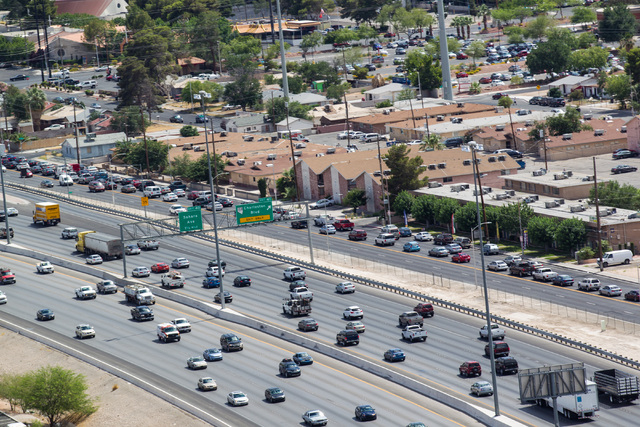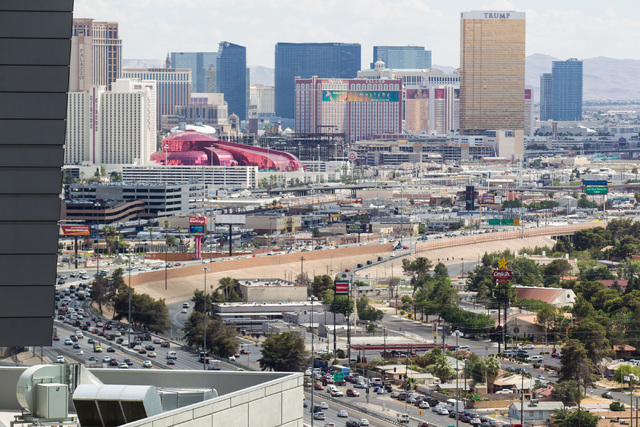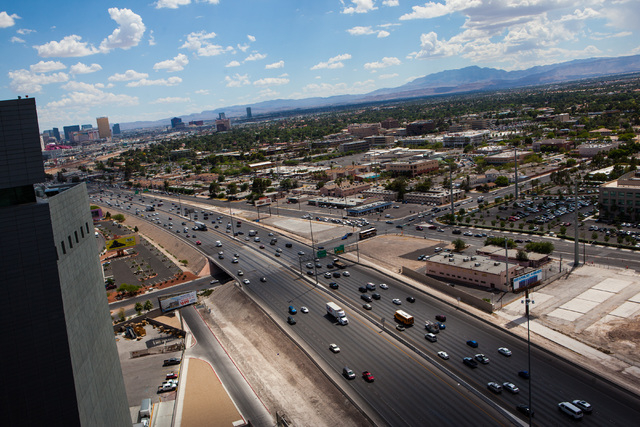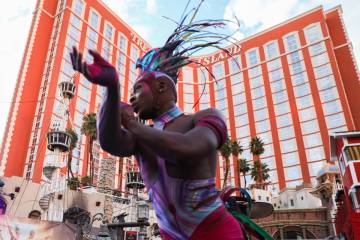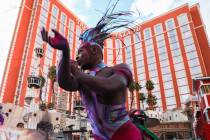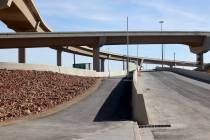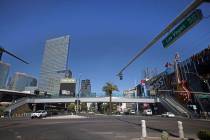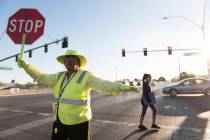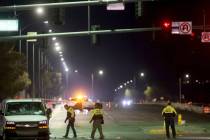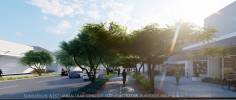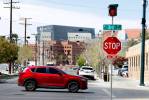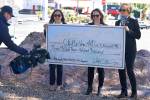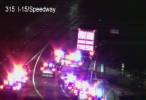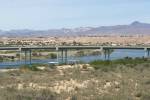Las Vegas’ transportation solution must be multimodal
I need a break.
Three straight nights of partying at the Electric Daisy Carnival over the weekend just about totaled me.
But I don’t want to leave loyal Warrior readers in the lurch.
That’s why I accepted a Father’s Day offer from my son, Marco, who received degrees in geography and urban planning at the University of Nevada, Reno, and works in the city of Las Vegas’ sustainable energy program, to stand in today.
— Richard N. Velotta
By MARCO VELOTTA
SPECIAL TO THE REVIEW-JOURNAL
To readers, the Road Warrior column may conjure imagery of transportation dystopia. The mailbag contains a steady stream of inquiries on the seeming endless havoc played about on our roadways. As a single-occupant driver, carpooler, bicyclist and public transit user, I also see the strengths and weaknesses of our transportation system, as well as opportunities for improvement.
Transportation drew me to the planning profession as I grew up during the tidal wave of Vegas growth. Planners and engineers work to ensure a Mad Max-esque landscape of orange cones, idle bulldozers, and potholed streets don’t envelop the valley, as well as answer my favorite question: “Who planned this?”
Transportation is, of course, a top issue in cities nationwide. Unfortunately, there isn’t a single solution to solving transportation challenges that is cheap or easy. It takes a balanced combination of incremental strategies to plan, design, fund and build a safe, efficient, multimodal transportation network that is integrated with urban land use. I submit there is an increased national recognition of this fact, which has altered how plans are made.
The need for multimodal transport is evident. Consider nearly all trips taken by millions of city residents and visitors are by car.
Streets and highways have finite capacities, and once reached, gridlock ensues.
Selective improvements can and should happen, such as Project Neon, the 215 Beltway and Interstate 11, but no city will ever be able to build their way out of congestion — it’s simply too costly and impractical.
Does multimodal transport mean everyone abandons their cars? No. Planning for a multimodal network provides transportation choice. Plans consider autos; complete streets that accommodate pedestrians, bikes, transit and carpools; taxis; and the monorail. Car- and ride-sharing services must also be a part of the solution. Announcement of light rail could bring dramatic mode shifts, provided it connects passengers with neighborhoods and major destinations.
Equally important are continued investments in transportation system management (such as intelligent transportation systems like message boards with travel times and ramp metering) and demand management (such as commuter incentives or policies that better price and manage parking).
Land use and transportation are interdependent — with investment in light rail and multimodal infrastructure, urban form can orient away from vast auto-dominated places to ones that are transit- and people-oriented.
While transportation funding at the federal level is broke, fuel revenue indexing at the state and local level has proved to jump-start road improvements; other funding strategies must be explored, possibly even discussing whether to alter funding formulas from roads to other modes.
Finally, effective communication, cooperation, and coordination between stakeholders is key, especially with the many different segments of the public must weigh in on planning efforts.
Consider the city of Las Vegas and its Mobility Master Plan, which takes these strategies into account.
“While the city’s 20-year Mobility Master Plan is evaluating multimodal transportation improvements throughout the city, there is a strong emphasis on insuring that improvements are coordinated amongst other mobility initiatives that are being proposed regionally, especially with some of the improvements that the RTC is proposing along the resort corridor,” said the city’s executive director of community development, Jorge Cervantes.
“These improvements are going to make it easier for visitors to get from the airport and the Strip into downtown, as well as facilitate the ability for our residents that work along the resort corridor to get to their job locations.”
As the plan develops, the final product will be a plan that outlines projects for implementation and costs and potential funding sources.
It is coordinated and complementary to other city planning efforts, including the Las Vegas Medical District, Downtown Las Vegas, the Transportation Investment Business Plan and Maryland Parkway corridor.
A final plan is anticipated in early 2016.
As reader questions on poor signal timing, road work on parallel streets, or why roundabouts even exist continue next week, the reality will be that construction will be ongoing — progress and improvement will always be required of a system that’s vital to our economy and quality of life.
Plans employing an array of strategies will provide guidance; we certainly wouldn’t accept the dystopian alternatives of unsafe roads, wasted time, pollution, higher costs or lack of choices.
Questions and comments should be sent to roadwarrior@reviewjournal.com. Please include your phone number. Follow @RJroadwarrior on Twitter.
ROAD WORK AHEAD
■ Interstate 15 traffic has been shifted to southbound lanes at milepost 16 in the Virgin River Gorge in Arizona for the demolition of a bridge that is being replaced. There will be a single lane of traffic in each direction of I-15, but state officials say motorists should expect traffic delays of up to 15 minutes through December.
■ Tamarus Street will be restricted to one lane in both directions between Warm Springs Road and Eldorado Lane, Mondays through Fridays through Oct. 31 from 7 p.m. to 4 a.m. for a sewer line project.
■ Pavement removal and replacement will continue on Rampart Boulevard from Lake Mead Boulevard south to Canyon Run Drive through the end of June.
■ Bridger Avenue traffic will be restricted to one way westbound between Las Vegas Boulevard and Sixth Street until early July. The $5 million project will include improving sidewalks, lighting and landscaping along Bridger between Main Street and Sixth.
■ The left and center travel lanes of Nellis Boulevard will be closed from Harmon Avenue to Boulder Highway, Mondays through Fridays, from 7 a.m. to 3 p.m., through June 30, for a water reclamation line project. Traffic will be shifted to the right lane during construction.
■ Concrete repairs to storm drainage along Nellis Boulevard between Gowan Road and Las Vegas Boulevard are planned through July 1. The left northbound travel lane will be closed. Work is planned on weekdays from 6 a.m. to 2 p.m. Other maintenance work is planned on the left-turn-lane bay on the 3800 block of Nellis.
■ Oakey Boulevard will be closed at the east side of Decatur Boulevard for a storm drain installation through mid-July. Oakey will remain open to Decatur on the west leg of the intersection. Decatur will remain open.
■ Road repairs are planned on state Route 158, which connects Kyle Canyon and Lee Canyon roads in the Spring Mountains. Portions of deteriorating road will be removed and the surface of the 9-mile road repaved in weekday work. All lanes will be open on weekends and non-work hours. Speed limits will be reduced and a pilot car will guide motorists around construction zones, resulting in delays of up to 30 minutes. The project continues through late August.
GASOLINE PRICES
The average gasoline price Friday in the Las Vegas Valley was $3.24 per gallon. It was $3.21 in Nevada. The national average of $2.80 is up 1 cent from a week ago, up 9 cents from a month ago and down 88 cents from a year ago.



